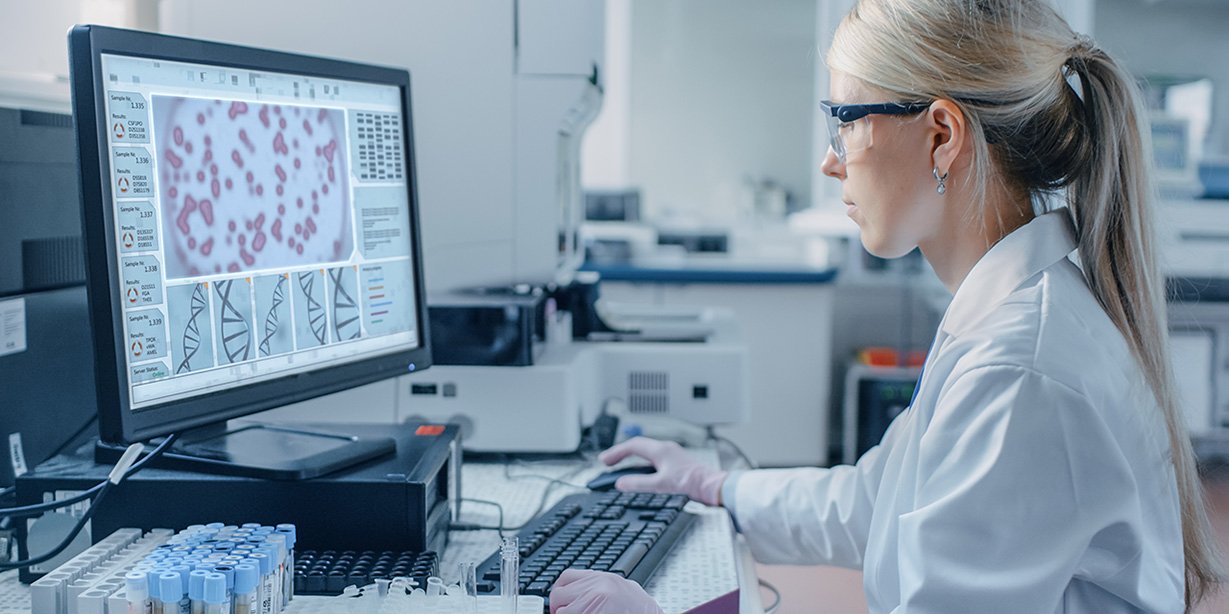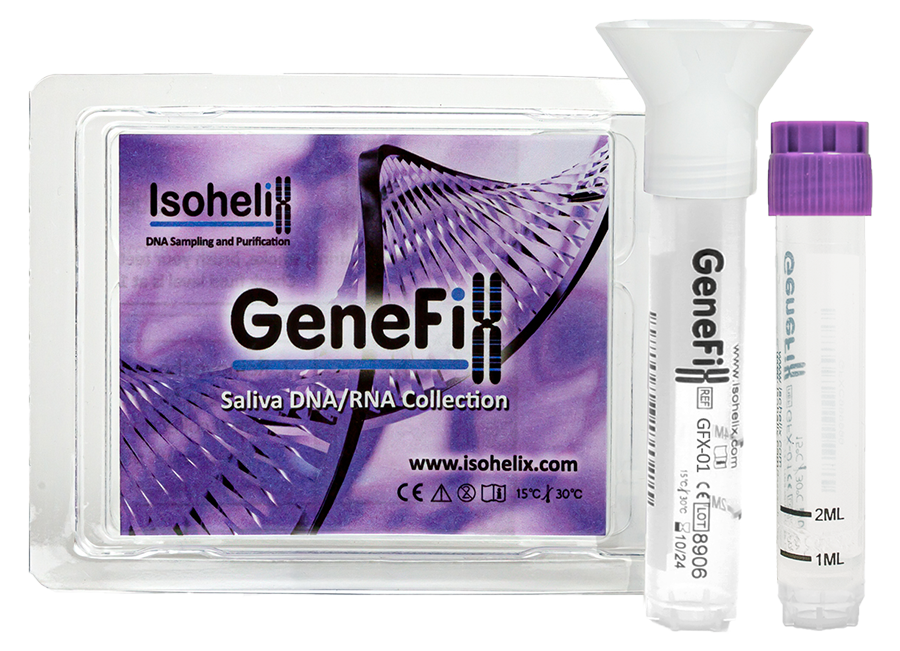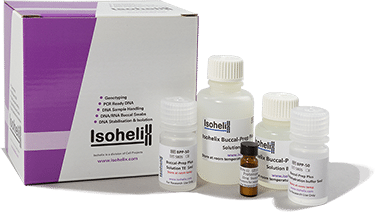
We’re thrilled to announce our attendance at Festival of Genomics & Biodata in London on January 29th and 30th. Visit us at Booth #111 to explore our latest innovations in Sample Collection, Stabilization, and DNA Isolation for NGS.

We’re thrilled to announce our attendance at Festival of Genomics & Biodata in London on January 29th and 30th. Visit us at Booth #111 to explore our latest innovations in Sample Collection, Stabilization, and DNA Isolation for NGS.


Check out this hot-off-the-press publication by Kapellou et al. from St Mary’s University in London, where questionnaires, cognitive tests, and genotyping were used to investigate the interactions between genetics and habitual caffeine consumption on cognitive performance.
Healthy participants completed questionnaires on sociodemographic, health, and lifestyle factors and caffeine and alcohol intake.
They were then subjected to cognitive tests to assess social and emotional cognition, memory, attention, and executive function.
Finally, DNA was collected remotely from participants using an Isohelix RapiDri™ Swab kit. DNA was extracted and samples were genotyped at loci associated with caffeine metabolism and response, using TaqMan® SNP genotyping assays.
The findings suggest an association between genetic caffeine metabolism, habitual caffeine intake, and cognitive function in terms of social cognition and executive function.

Participants were grouped into ‘fast’ and ‘slow’ metabolizers:
The study confirms that the association between caffeine and cognition is domain-specific, with social and emotional cognition and executive linked to habitual intake. It also replicates previous findings that ‘fast’ metabolizers consume more caffeine. More research in natural environments using larger cohorts is needed to confirm these findings and understand how habitual caffeine may influence cognitive function based on individual genotypes.


We are always thrilled to see our products cited in peer-reviewed publications.
This month, we would like to share some publications in which our popular Buccalyse Direct-to-PCR (BEK) kits (sometimes referred to as Buccalyse DNA Release kits) have been used to rapidly extract DNA for applications such as PCR and microarray analysis:
The objective of this research was to assess the sensitivity, repeatability, reproducibility, accuracy, and precision of an HTS iSelect Custom panel called ‘Rita’, a custom SNP microarray panel developed using Illumina Infinium HTS technology. Designed for high-throughput genotyping, the panel efficiently facilitates the analysis of over 4000 markers associated with health, lifestyle, and forensic factors.
Studies revealed consistent panel performance across different batches and operators, with no significant deviations in call rates or genotyping results. The evaluation confirmed the Rita microarray as a robust, high-throughput genotyping tool, underscoring its potential in genetic research and forensic applications.
Samples for the study were extracted from buccal swabs using the Buccalyse DNA Release Kit. The sensitivity study showed that it is possible to obtain more than a 99 % call rate when working with as little as 0.78 ng of DNA.
The ability to a lower DNA input increases the assay’s utility in forensic laboratories, where casework samples may sometimes contain small amounts of genetic material.
This study examined the relationship between six obesity-related genes (CLOCK, FTO, GHRL, LEP, LEPR, MC4R) and their impact on measures of obesity and emotional eating behavior in 220 Romanian adults.
Buccal cells were collected from the lateral wall of the oral vestibule and sent for processing in a UK laboratory using the Rapidri Swab kit. DNA was then extracted from the buccal cells using Buccalyse, and genotype analysis was performed using the ABI7900 real-time thermocycler system.

The analysis revealed significant variability in obesity-related phenotypes and emotional eating behaviors across different genotypes. The study provides a foundation for targeted interventions to prevent and reduce obesity and suggests potential strategies for gene expression modulation to mitigate the effects of emotional eating.
Osteonecrosis of the jaw (ONJ) is a rare but serious adverse drug effect linked to long-term and/or high-dose exposure to nitrogen-bisphosphonates (N-BP). The objective of this investigation was to assess the relationship linking immune function, N-BP exposure, the oral microbiome, and ONJ susceptibility.
To investigate the oral microbiome, Isohelix DNA swabs were used to obtain microbial DNA by running the swab along an area of the outer gumline of subjects. DNA was extracted using the Isohelix Buccalyse DNA extraction kit and stored at −20°C until analysis.
The oral microbiome was characterized by 454 pyrosequencing of the 16S rRNA gene in 93 subjects stratified by N-BP exposure and a history of ONJ.
The oral microbiome was found to be unlikely to cause ONJ. Instead, individuals with bisphosphonate-associated ONJ lacked immune resiliency, which impaired their capacity to respond adequately to the immunological stress of N-BP.
Buccalyse offers researchers a robust, user-friendly tool that consistently delivers reliable results. Its widespread adoption in diverse studies reflects its quality and adaptability, making it an indispensable asset for advancing research in genetics, microbiome studies, and forensic science.
The above publications feature DNA extracted using the Buccalyse Direct-to-PCR kit being used in a range of molecular biology applications including (but not limited to) genotyping using SNP micorarrays and PCR methods, and 454 pyrosequencing of the 16S rRNA gene for microbiome characterization.
The Buccalyse Direct-to-PCR Kit has been specially formulated to produce high DNA yields from buccal swabs. The kit is a quick and simple one-tube alternative to existing DNA isolation methods when extracting DNA for use in PCR reactions. The yield of DNA from a single buccal swab using Buccalyse is generally around 2 to 4ug from an adult.



Isohelix is delighted to be attending ASHG 2024 in Denver from November 5 to 9. Join us at Booth #775!
We can’t wait to hear about your projects and introduce you to our innovative solutions for sample collection, stabilization, and purification.
Come by to discuss how our products can enhance your research efforts. We look forward to connecting with you at the event!


GWAS studies are genomic studies that test hundreds of thousands of genetic variants across many genomes, to find those statistically associated with a specific trait. GWAS have a range of applications including understanding the underlying biology of a phenotype, estimating the heritability of a trait, investigating genetic correlations and making clinical predictions.
GWAS can identify associations but doesn’t typically pinpoint causal relationships, so further studies are usually required to confirm findings and explore their biological significance.
Genome wide association studies (GWAS) play a crucial role in understanding the mechanisms underlying dental caries and periodontal disease. There are large variations in genetics and lifestyles across ethnicities, and although large-scale genome-wide association studies (GWAS) on dental caries and periodontal disease have been conducted extensively, few studies focus on Asian populations.

The recent study, “Genome-wide association meta-analysis identifies two novel loci associated with dental caries” by Nogawa et al., used genome data from 45,525 Japanese individuals to conduct a GWAS, assessing the self-reported history of dental caries and periodontal disease of study participants. A meta-analysis was then performed by integrating our results with those from a previous large-scale GWAS predominantly involving European populations.
Although no new loci associated with periodontal disease were identified, two novel loci associated with dental caries were discovered. The findings contribute to understanding the mechanisms underlying dental caries and periodontal disease.
We were delighted that this study used GeneFix Saliva collection devices to collect and stabilize DNA in saliva samples collected from participants. Genotyping was executed employing various Illumina Infinium BeadChips.
The GeneFix™ range of DNA/RNA products has been designed to maximize the yields and purity of DNA/RNA collected and stabilized from saliva. GeneFix kits are ideal for collecting samples from study participants at home or in the clinic, as they are non-toxic, simple to use, and contain a reagent that stabilizes DNA at room temperature for up to 60 months. After sample collection, kits can be mailed to the lab for DNA extraction.



Between 1993 and 2018[1] breast cancer rates in women increased by 24%, and in the UK in 2022, breast cancer was the most common cause of death for women between 35-49 and 50-64 years of age.[2]
We are delighted to see Isohelix products used for Breast Cancer research, with two recent UK-based studies using GeneFix Saliva collection devices to collect and stabilize DNA in saliva samples collected from study participants:
The GeneFix™ range of DNA/RNA products has been designed to maximize the yields and purity of DNA/RNA collected and stabilized from saliva. GeneFix kits are ideal for collecting samples from study participants at home or in the clinic, as they are non-toxic, simple to use, and contain a reagent that stabilizes DNA at room temperature for up to 60 months. After sample collection, kits can be mailed to the lab for DNA extraction.
Read on to learn about recent studies using GeneFix products for Breast Cancer Research.
The BRCA-DIRECT study was funded by Cancer Research UK and affiliated with the Institute of Cancer Research, SHORE-C, Manchester University Foundation Trust, and The Royal Marsden Foundation Trust. The study aimed to provide an easy way for patients with breast cancer to access genetic testing within the NHS.

The BRCA1, BRCA2, and PALB2 genes are associated with hereditary breast cancer, so Identification of a pathogenic variant in one of these genes can have health implications for patients and their relatives. This study examined the feasibility, safety, and acceptability of a digital information model.
Participants provided a saliva or blood sample and accessed a digital platform using a device connected to the internet. Family history details were collected, and information was gathered about the general knowledge of BRCA testing. Participants were asked about their anxiety levels at different points in the process. Half of all those who took part saw digital information, and half booked a standard appointment with genetic counselors.
Participants were then randomized to receive their results digitally or by booking a telephone appointment with a genetic counselor. Everyone who had a positive result was then referred to their local clinical genetics team. If the digital pathway is successful, the concept could be expanded to other cancers and hospitals.
We are looking forward to seeing the results of the study that has led to further funding for a pilot across North Thames GLH, funding by SBRI Healthcare/NHS England Cancer Programme: SBRI Healthcare – NHS Cancer Programme awards £12.1 million to accelerate new front-line innovations that detect and diagnose cancer earlier
The Breast Cancer Risk Assessment in Younger Women (BCAN-RAY) study began in May 2023. BCAN-RAY is one of the first research studies in the world to identify new ways to predict the risk of younger women getting breast cancer. The study aims to evaluate a comprehensive breast cancer risk assessment strategy among a diverse ethnic and socioeconomic population of women aged 30–39 years without a strong family history of breast cancer.
Two hundred fifty women previously diagnosed with breast cancer without a strong family history of the disease will be studied alongside 750 women (control participants) in the same age group who have not had breast cancer and who also have no strong family history of the disease.
Control participants will complete questionnaires about breast cancer risk factors, undergo low-dose mammograms, and donate a saliva sample, which is collected using Isohelix GeneFix Saliva Collection Kits. Saliva samples will be used to analyze the genetic makeup of participants and identify those at higher risk using a tool called a polygenic risk score, which is a powerful predictor of breast cancer risk.

The BCAN-RAY study should complete recruitment in May 2025, and we look forward to seeing the results.
The study is funded by Cancer Research UK via the International Alliance for Cancer Early Detection (ACED), The Christie Charity, and The Shine Bright Foundation. It is led by Manchester University NHS Foundation Trust, and delivered at The Nightingale Centre at Wythenshawe Hospital and breast oncology centers across Greater Manchester and Cheshire.
Please follow the link to the Sarah Harding Breast Cancer Appeal: A letter from Girls Aloud (christie.nhs.uk)
Read our blog article about genomic analysis using saliva instead of blood: https://isohelix.com/saliva-instead-of-blood/
Find out how to simplify Saliva and Buccal Swab sample collection and processing: https://isohelix.com/how-to-simplify-saliva-and-buccal-swab-sample-collection-and-processing/
Click here to find out more about our GeneFix Saliva Collection Products: https://isohelix.com/genefix-saliva-dna-rna-collection/
[1] Facts and figures | Breast Cancer UK
[2] Office for National Statistics. Deaths registered in England and Wales: 2022-2023


We were delighted to see that two recent, high-profile studies looking at the effects of spaceflight on astronauts’ microbiomes chose Isohelix buccal swabs to collect their valuable samples.
In the Nature paper, “Longitudinal multi-omics analysis of host microbiome architecture and immune responses during short-term spaceflight,” published by Tierney et. al., (2024), the team used Isohelix swabs to collect samples from three microbial ecosystems (oral, nasal, and skin), before and after a 3-day mission to space.
Using paired metagenomics and metatranscriptomics alongside single-nuclei immune cell profiling, the team characterized microbiomes before, during and after spaceflight. The study revealed shifts in the microbiome and immune response during short term spaceflight; although most microbiome alterations were transient, longer-term shifts were observed in the astronaut’s oral microbiomes.
Another Nature paper, “Spatial multi-omics of human skin reveals KRAS and inflammatory responses to spaceflight”, Park et al (2024), also looked at the effects of short-duration spaceflight on the skin. The study applied a wide range of -omics methods, and as part of this study, Isohelix swabs were used to collect samples of astronauts’ skin microbiomes. Metagenomics and metatranscriptomics analyses were then performed on the skin swab samples. A key finding was that post-flight samples showed significant up-regulation of genes related to inflammation and KRAS signalling across all skin regions.
The results from these two important studies can help guide spacecraft design and response countermeasures for astronauts on future missions, and we are excited to see Isohelix products being used to expand our knowledge in this area.
Isohelix swabs feature a unique swab matrix and quick-release surface that maximises nucleic acid yields. Swab batches are ethylene oxide treated and routinely tested for human DNA contamination, making them ideal for capturing precious nucleic acid samples.
CLICK HERE TO FIND OUT MORE ABOUT ISOHELIX BUCCAL SWABS FOR NUCLEIC ACID COLLECTION OF ORAL AND SKIN MICROBIOME SAMPLES
Isohelix also offer stabilization reagents for buccal swabs that offer long term sample stability prior to isolation


The body of research using Isohelix products is growing all the time. One that caught our attention recently was, “Exploring the legacy of African and Indigenous Caribbean admixture in Puerto Rico” by Taiye Winful et al. (2023).
The goal of this study was to assess the biogeographic origins of African descendant Puerto Ricans and to investigate the potential for Indigenous ancestry within this community.
2ml saliva samples were collected from self-identified African descendant Puerto Ricans residing in Puerto Rico using Isohelix Genefix™ collection kits. GeneFix kits are ideal for collecting samples from study participants in remote communities as they are non-toxic, simple to use, and contain a reagent that stabilizes DNA at room temperature for up to 60 months. After sample collection, kits can be mailed to the lab for DNA extraction.
When the samples reached the lab, DNA was extracted using the Isohelix Genefix Saliva-Prep 2 DNA kit, which uses a precipitation method to isolate high yields of pure DNA. The mitochondrial genomes of these individuals were sequenced, and Y chromosome haplogroups were genotyped for samples donated from males. Summary statistics, comparative analyses, and network analysis were used to assess diversity and variation in haplogroup distribution between the samples and comparative populations.
Results from the mitochondrial haplogroups showed that 66% had African, 5% had European, and 29% had Indigenous American matrilines. The Y chromosome analysis showed that 52% had African, 28% had Western European, 16% had Eurasian, and 4% had Indigenous American patrilines.
This study successfully used Isohelix GeneFix and Saliva-Prep kits to collect and extract DNA from saliva samples from study participants across Puerto Rico. The genomic analysis of these saliva samples have contributed to understanding how African descendants and Indigenous American admixture have shaped present-day communities.
CONTACT US to find out how we can help with your sample collection and DNA extraction needs.

Isohelix will be exhibiting at ESHG 2024 June 1st – 4th in Berlin, at Booth #652. Alongside our New Product launches for DNA Collection and Isolation, we will also have our development team available to discuss any technical matters that might help in your research or diagnostics. Please visit us anytime.


High molecular weight (HMW) DNA is important for applications that require the use of very long DNA molecules, such as long read sequencing. Long-read sequencing enables the detection of variants that are often difficult to resolve with short reads, such as structural variants, complex rearrangements, and variants in highly repetitive regions.
In order to fully take advantage of long-read sequencing, high quality, high molecular weight (HMW) input DNA is required. Traditional DNA extraction methods often result in fragmented DNA samples. If these shorter fragments are not removed, the average length of sequencing reads, and subsequent effectiveness of long-read analyses are reduced.
To address this requirement, Isohelix has developed the Mag-Filter HMW Clean Up Kit, which employs magnetic beads alongside specialized size selection chemistry to isolate high molecular weight DNA fragments from extracted DNA samples, while removing smaller DNA fragments and other contaminants from samples.
Samples prepared using the Mag-Filter HMW Clean Up Kit are perfect for NGS and long-read sequencing applications.
The Mag-Filter HMW kit removes low molecular weight DNA while safeguarding high molecular weight DNA integrity. High purity HWM DNA is achieved through DNA sample cleanup and size selection.

The Mag-Filter HMW kit is optimized for use with extracted saliva samples but can be used on DNA from a variety of sample sources, such as buccal swabs. It can also be used to increase sample purity, allowing the use of valuable samples with initially low purity that might otherwise fail quality control checks.

The kit is simple to use and can cleanup samples for library prep in less than one hour. All kit components are non-hazardous, and gel separation is not required. The kit protocol can also be easily adjusted to accommodate varying sample volumes; the protocol is fully scalable, from small manually processed sample batches up to plate-based high throughput automation.